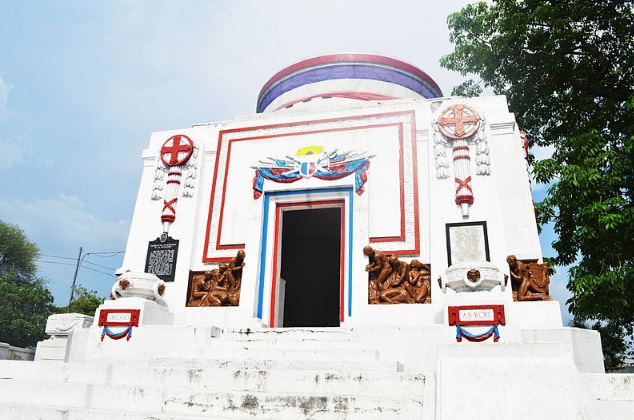From museums to city squares, heritage sites, bridges, buildings, and national parks, memorials are erected to remind us of important people or significant historic events, imparting powerful messages about their relevance to the world today.
You’ll see the Lincoln Memorial in Washington D.C., which honors the legacy of the 16th president of the United States Abraham Lincoln, the National Civil Rights museum in Memphis, Tennessee that explores the movement’s history, or the U.S.S. Arizona in Honolulu, Hawaii that remembers the tragic attack on Pearl Harbor.
With that, it’s little wonder that memorials were also created for the lesser-known yet equally notable Filipino-American War that happened from 1899 to 1902.
Considered as a continuation of the Philippine revolution against their Spanish oppressors, the Philippines undertook a fiery yet ill-fated insurrection against the American imperialists, which took the lives of more than 20,000 Filipino revolutionaries, 4,200 American soldiers, and as many as 200,000 Filipino civilians.
Here, let’s look at the memorials established to remember this tragic but monumental event in both countries’ histories.
Mausoleum of the Veterans of the Revolution
Located inside the Manila North Cemetery, the Mausoleum of the Veterans of the Revolution is a national monument and memorial built to commemorate all the Filipino revolution who participated in the Philippine Revolution (1896–1898) and the Filipino-American War.
Then-Governor-General James F. Smith commissioned the construction of the memorial through Executive Order No. 87. Architect Arcadio Arellano designed the mausoleum under the Hispano-Filipino-American art style, which became popular in the 1900s.
The memorial features a massive neoclassical cubic structure sitting on an elevated podium. Its drum is topped by a shallow dome, accentuated by small windows for circulation. Meanwhile, names, swags, and human figures decorate the facade to commemorate all the people who died in both events. Built in 1915, the mausoleum was inaugurated in 1920 and was listed as a National Historical Landmark in 1993.
First Shot in Filipino-American War Marker
For over 300 years, the Philippines have been under Spanish colonization. After the centuries-long struggle, it was only in 1986 when the Filipinos saw their tormentors’ weaknesses and started to revolt against them. It lasted until 1898, but the three years they waged fighting became futile, having been unsuccessful in eradicating the Spaniards from the archipelago.
After Spain’s fall against the United States, the former ceded Cuba, Puerto Rico, Guam, and the Philippines to the latter. Yet, the Filipinos, which have long been yearning to be freed from foreign rule, rejected the United States’ sovereignty on the islands.
As such, conflict was inevitable and the Filipino-American War started after American troops who were only assigned to patrol fired the first shots against the Filipino insurgents and killed two of them on the evening of February 4, 1889.
The event led to the first skirmish of the war called the Battle of Manila, involving 19,000 U.S. soldiers led by General Elwell Stephen Otis and 15,000 Filipino militiamen under 1st Philippine president Emilio Aguinaldo. While Aguinaldo initially offered a ceasefire, Otis deemed that since the war had already begun it must already boil down to its end. Thus, leading to the ensuing Filipino-American War.
A memorial marker is located at the corner of Silencio and Sociego Streets, in Santa Mesa, where the historic first shot and the outbreak of the war occurred.
San Juan River Bridge Marker
For the longest time, it was initially deemed that the first shot took place at the San Juan Bridge (also called the Tulay ng Balsahan) after a Filipino soldier cross the “border” at the bridge, which during that time served as the demarcation between areas controlled by the Americans and Filipinos.
After thorough research conducted by Benito Legard, Philippine National Historical Institute’s former head, it was found out that the actual area where the first shot happened was actually called Blockhouse7 situated at Silencio and Sociego streets in the district of Sta. Mesa in Manila.
History books changed forever after NHI officially decreed that the former Blockhouses was the vicinity of the historic first shot. Moreover, it meant moving the marker from the San Juan Bridge to its formal site.
Of course, it stirred some controversy, especially to the people of San Juan who seemingly lost a part of its history. Yet, a new marker was added to the bridge, stating it’s the site where the Filipinos and Americans agreed on January 29, 1899, to draw the demarcation line, only to be infringed and be a site of a battle between the two forces, not more than a week later.
Tirad Pass National Shrine
Situated at the peak of the Tirad Pass National Park, the Tirad Pass National Shrine commemorates the last stand of the Filipino revolutionaries under the rule of General Emilio Aguinaldo.
The memorial honors the heroics of the youngest Filipino General Gregorio del Pilar, who along with his 59 men, fought his last battle against 500 American soldiers, allowing Aguinaldo to escape but leading to Del Pilar’s early demise. The shrine curves upward towards the hilly spot where Del Pilar fell and died and where now the makeshift mark of the bloody Battle of Tirad Pass lies.
Apart from the historical significance, Tirad Pass is a popular place among adventurers due to its stunning beauty. It’s the third highest mountain in the province of Ilocos Sur, and the 446th highest peak in the Philippines.
Final Words
While the war was short-lived compared to the other better-known war joined by the United States, it’s an important part of history, being a gallant battle between nationalism and imperialism. And, though the Americans have emerged as victors, these memorials possess more value for the Filipinos, whose love for the country, spirit, and thirst of independence are able to wage a three-year war against the mighty United States. Visiting a museum can have many benefits.
